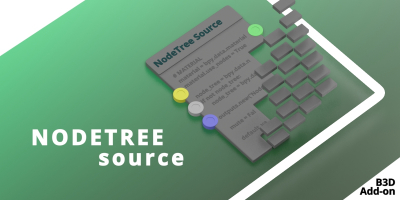4.2
Blender add-on: NodeTree Source
Blender 3D add-on for converting material nodes into python source code and storing it in the library.
Blender add-on: Specification Sheet
Blender 3D add-on for making specification tables for the project.
Blender Add-On Template generator
Blender 3D add-on template generator
This script generates the initial template for the Blender add-ons development.

 Buy on Blender Market
Buy on Blender Market Buy on Gumroad
Buy on Gumroad Get on Patreon
Get on Patreon
